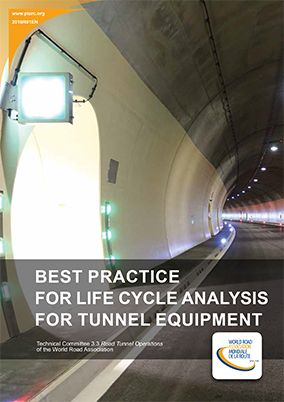Best practice for life cycle analysis for tunnel equipment

Life Cycle or Life Cycle Cost (LCC) aspects are becoming more important. From an economic point of view, it is important to consider these aspects both in the design and in the operation of tunnel equipment. This best practice report is a natural follow-up to the former report on life cycle aspects of electrical road tunnel equipment [1].
An international survey was conducted in order to gain an insight to how tunnel owners behave today regarding life cycle analysis of technical equipment. 20 answers from 14 countries worldwide showed that the majority of tunnel owners perform periodic inspections, ca. 50% uses systematic methods for the analysis and almost 60% takes life cycle estimations into account.
This report describes how life cycle analysis in the sense of condition analysis should be performed systematically, how system criteria can be used, how aggregation of different criteria should be done and how risk-based methods for system analysis can be applied.
It is outlined that "random sampling" methods are seldom appropriate due to the low number of inspected items.
Particular consideration is given to the problematic aggregation of different condition values, evaluated with a set of criteria. It is outlined, and clarified, how criteria can be checked regarding dependencies and how "orthogonality" can be reached.
Finally, the report shows that with a well-defined set of criteria, a systematic analysis procedure and the correct aggregation an overall (technical) system condition of a specific road tunnel can be derived. "Best practice" is reached by following such a process.
Information sheet
- Date: 2016
- Author(s): Comité technique 3.3 Exploitation des tunnels routiers / Technical Committee 3.3 Road Tunnel Operation
- Domain(s): Road Tunnel Operations
- Type: 2016R01EN - Technical Report
- PIARC Ref.: 2016R01EN
- ISBN: 978-2-84060-370-2
- Number of pages: 21